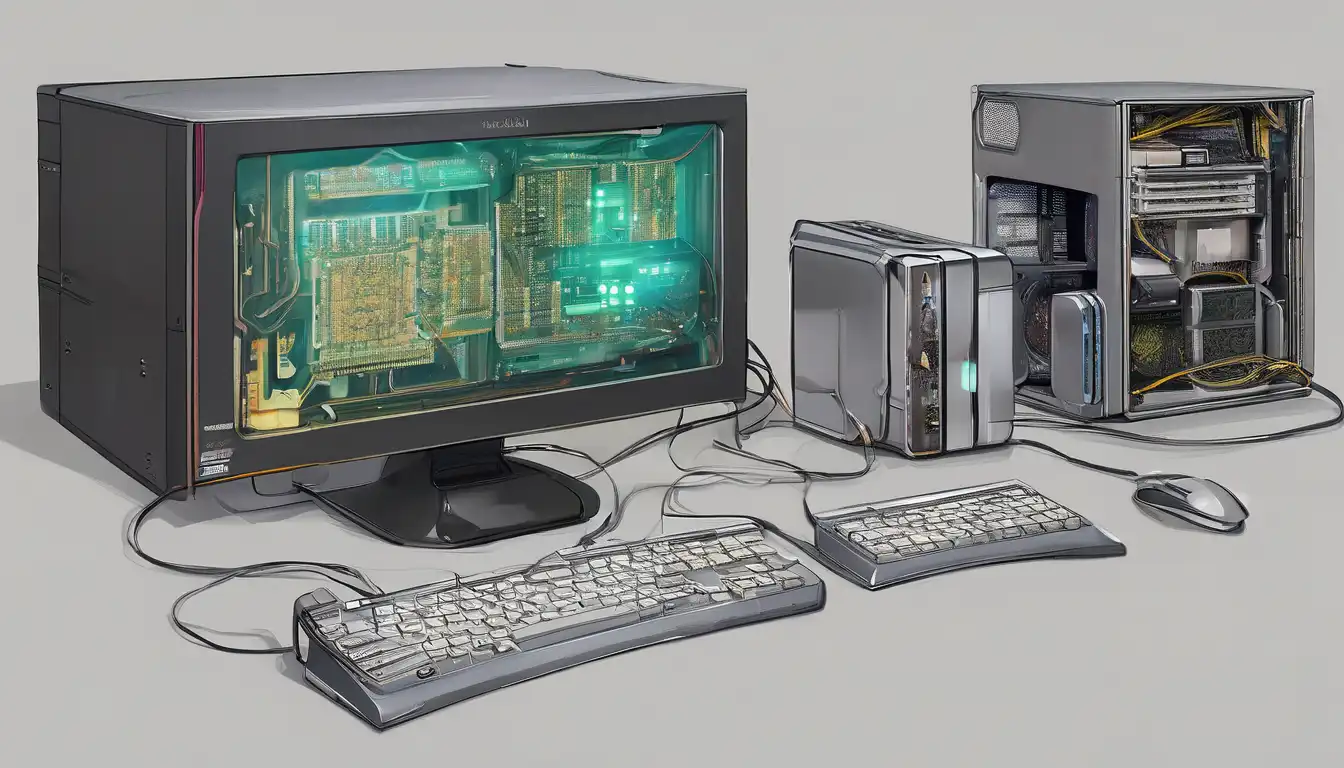Revolutionary Advances in Computer Hardware Technology
The landscape of computer hardware technology is undergoing unprecedented transformation, with innovations emerging at an accelerated pace. From quantum computing breakthroughs to AI-optimized processors, the latest developments are reshaping how we interact with technology and pushing the boundaries of computational power. These advancements are not just incremental improvements but represent fundamental shifts in hardware design and capabilities.
Next-Generation Processor Architectures
Processor technology has seen remarkable evolution with the introduction of heterogeneous computing architectures. Companies like Intel, AMD, and ARM are developing chips that combine high-performance cores with efficiency cores, optimizing power consumption while maintaining peak performance. The latest processors feature advanced node technologies, with some manufacturers pushing beyond 3nm process nodes, enabling more transistors per square millimeter than ever before.
Quantum computing represents the most significant leap in processing technology. While still in experimental stages, quantum processors are demonstrating capabilities that could revolutionize fields like cryptography, drug discovery, and complex system modeling. Major tech companies are investing billions in quantum research, with some systems already achieving quantum supremacy in specific computational tasks.
Memory Technology Breakthroughs
The memory sector has witnessed substantial innovation with DDR5 RAM becoming mainstream, offering significantly higher bandwidth and improved power efficiency compared to previous generations. New non-volatile memory technologies like 3D XPoint are bridging the gap between traditional RAM and storage, providing persistent memory solutions that maintain data without power.
Advanced memory architectures are enabling new computing paradigms, particularly in artificial intelligence and machine learning applications. High-bandwidth memory (HBM) stacks are becoming essential for AI workloads, while new memory technologies like MRAM and FeRAM offer promising alternatives for specific use cases requiring high endurance and fast access times.
Storage Solutions Evolution
Storage technology continues to advance with NVMe SSDs becoming the standard for high-performance computing. The latest PCIe 5.0 interfaces are doubling data transfer speeds, while QLC NAND flash technology is making high-capacity SSDs more affordable. These developments are crucial for data-intensive applications like video editing, scientific computing, and large-scale database management.
Emerging storage technologies include computational storage devices that process data at the storage level, reducing data movement and improving efficiency. DNA-based storage, while still experimental, shows potential for archival purposes with incredible density and longevity. Companies are also developing new forms of persistent memory that could eventually replace traditional storage hierarchies.
Graphics and Display Innovations
The graphics processing unit (GPU) market has seen revolutionary changes with the integration of AI acceleration capabilities. Modern GPUs are no longer just for rendering graphics but have become essential for machine learning, scientific simulations, and complex computational tasks. Ray tracing technology has matured, providing realistic lighting and reflections in real-time applications.
Display technology has advanced with mini-LED and micro-LED displays offering superior contrast ratios and brightness levels. High refresh rate monitors are becoming standard for gaming and professional applications, while 8K resolution displays are pushing the boundaries of visual fidelity. These innovations are transforming how we experience digital content across various applications.
Connectivity and Networking Advances
Hardware connectivity has evolved significantly with the widespread adoption of USB4 and Thunderbolt 4, providing universal connectivity solutions with high data transfer speeds. Wi-Fi 6E and the upcoming Wi-Fi 7 standards are revolutionizing wireless connectivity, offering lower latency and higher throughput for demanding applications.
5G integration in computing devices is becoming more common, enabling always-connected experiences with cellular-level connectivity. Network interface cards are evolving to support higher bandwidth requirements, with 100Gb Ethernet becoming accessible for enterprise and high-performance computing environments. These connectivity improvements are essential for cloud computing, remote work, and IoT applications.
Cooling and Power Management
Advanced cooling solutions are critical for managing the increasing thermal loads of modern hardware. Liquid cooling systems are becoming more mainstream, while phase-change cooling and immersion cooling are gaining traction in data center environments. These technologies enable higher performance densities and more efficient heat dissipation.
Power management has seen significant innovation with more efficient voltage regulation modules and advanced power delivery systems. AI-powered power management can dynamically adjust power consumption based on workload requirements, optimizing performance per watt. These developments are crucial for mobile devices, data centers, and environmentally conscious computing.
Specialized Hardware for AI and Machine Learning
The rise of artificial intelligence has driven the development of specialized hardware accelerators. Tensor Processing Units (TPUs), Neural Processing Units (NPUs), and other AI-specific chips are becoming integral to modern computing systems. These specialized processors are optimized for matrix operations and neural network computations, providing orders of magnitude improvement in AI workload performance.
Edge computing devices are incorporating dedicated AI hardware, enabling intelligent processing at the network edge. This reduces latency and bandwidth requirements while maintaining privacy and security. The integration of AI acceleration directly into CPUs and GPUs is making AI capabilities accessible across a wide range of devices and applications.
Future Trends and Emerging Technologies
Looking ahead, several emerging technologies promise to reshape computer hardware further. Neuromorphic computing, which mimics the human brain's neural structure, offers potential breakthroughs in energy efficiency and cognitive computing. Photonic computing, using light instead of electricity for data transmission, could revolutionize data center interconnects and high-performance computing.
Advanced packaging technologies like chiplets and 3D stacking are enabling new approaches to processor design, allowing manufacturers to combine different process technologies and specialized components into single packages. These innovations are driving the next wave of performance improvements while addressing the physical limitations of traditional semiconductor scaling.
The computer hardware industry continues to push the boundaries of what's possible, with innovations emerging across all aspects of computing technology. These advancements are not only making computers faster and more efficient but are enabling entirely new applications and computing paradigms. As hardware technology continues to evolve, we can expect even more groundbreaking developments that will shape the future of computing and digital transformation across all industries.
